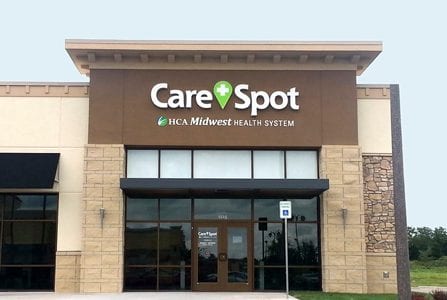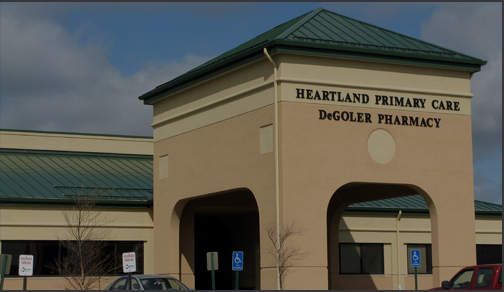Important Services Offered by Clinics Specializing in Urgent Care
Wiki Article
The Importance of Urgent Treatment Centers in Connecting the Gap In Between Medical Care and Emergency Situation Providers
Immediate care centers have become an essential part of the healthcare landscape, successfully resolving the vital demand for immediate medical focus without resorting to emergency services. By offering take care of non-life-threatening problems, these centers assist to reduce the problem on emergency situation areas and boost client accessibility to prompt treatment. Their prolonged hours and diverse services cater to a growing population seeking options to standard health care. The evolving duty of immediate care centers raises crucial inquiries concerning their integration within the wider healthcare system and the effects for individual outcomes and resource allotment.Summary of Urgent Treatment Centers
Urgent care facilities have come to be a crucial part of the health care delivery system, supplying obtainable clinical solutions for non-life-threatening conditions. These centers normally operate outside standard workplace hours, offering people an alternative to emergency clinic and main care setups. Patients seeking immediate care often existing with concerns such as minor injuries, infections, or diseases that call for timely interest but do not pose an immediate risk to life or arm or leg.Urgent treatment facilities are staffed by a series of medical care professionals, including doctors, nurse practitioners, and medical professional aides, that are outfitted to diagnose and treat different medical worries. They often include diagnostic tools such as X-ray makers and lab solutions, allowing them to offer detailed care on-site.
The facility of urgent care facilities has actually been affected by the increasing demand for timely medical solutions in a fast-paced society, where patients might have a hard time to safeguard visits with health care carriers. Therefore, these facilities intend to minimize congestion in emergency situation divisions, boosting overall healthcare efficiency. Additionally, urgent treatment facilities usually work as a bridge in between health care and emergency situation services, guaranteeing that clients obtain suitable care customized to their specific medical demands.

Advantages of Urgent Care Provider
Accessing timely treatment is a substantial advantage of urgent treatment solutions. These centers give immediate attention for non-life-threatening conditions, efficiently minimizing wait times contrasted to typical emergency situation departments. Patients seeking take care of minor injuries, health problems, or immediate health and wellness worries can obtain therapy without the long hold-ups typically related to hospital sees.One more trick advantage is the prolonged hours of operation. Numerous immediate care facilities are open nights and weekends, accommodating individuals that may not be able to see their medical care company throughout conventional workplace hours. This flexibility makes immediate care an accessible option for those with hectic routines or unexpected health issues.
Moreover, urgent treatment facilities commonly offer a variety of services, including diagnostic testing, X-rays, and standard lab services. This extensive method permits for quick medical diagnosis and treatment, improving patient satisfaction.
In addition, immediate treatment facilities are usually more cost-efficient than emergency situation spaces, making them an eye-catching alternative for people without insurance policy or those with high-deductible plans. Generally, immediate care solutions play an essential role in providing easily accessible, prompt, and affordable healthcare.
Comparison With Medical Care
Normally, clients frequently consider their options between immediate treatment facilities and medical care service providers when looking for clinical attention. Both offer essential duties in the health care system, yet they vary substantially in accessibility, expense, and extent.Medical care carriers are generally the very first factor of get in touch with for patients, concentrating on long-term health and wellness monitoring, preventative care, and chronic condition management. They use connection of care, cultivating a patient-provider partnership that enables detailed health and wellness analyses and customized treatment plans. Scheduling a visit can be lengthy, commonly needing days or weeks in breakthrough. Urgent Care.
In comparison, immediate treatment centers offer instant look after non-life-threatening problems that call for prompt attention, such as small injuries or infections. These centers commonly run beyond typical workplace hours, fitting individuals that may not be able to see their health care copyright during routine organization times. Furthermore, urgent care is usually extra cost-efficient than emergency clinic brows through, making it an enticing choice for those with limited medical care accessibility.
Eventually, while immediate care centers and health care providers both add to person health and wellness, they deal with distinctive demands, making it vital for clients to establish which choice ideal straightens with their conditions.
Emergency Services Communication
The communication between immediate treatment centers and emergency situation solutions is a vital aspect of the medical care landscape, particularly when people deal with situations that might escalate in intensity. this Urgent care centers work as a bridge in between medical care and emergency situation departments, resolving non-life-threatening problems that require instant focus. This collaboration enhances individual outcomes and optimizes source allowance within the healthcare system.When individuals provide with not lethal yet urgent concerns, urgent Website care centers can effectively manage their demands, easing congestion in emergency situation spaces. When a person's condition exceeds the scope of urgent care treatment, Facilities furnished with diagnostic abilities can promote timely referrals to emergency situation solutions. This smooth communication helps guarantee that individuals obtain the ideal level of treatment without unnecessary delays.
Furthermore, effective interaction between urgent care providers and emergency services is essential. Sharing patient details and therapy backgrounds promotes coordinated care, reducing the danger of repetitive examinations and treatments. As health care continues to evolve, the dynamic connection in between urgent treatment facilities and emergency services will certainly play a pivotal duty in enhancing individual care efficiency, satisfaction, and overall wellness outcomes within the community.
Future of Urgent Treatment Facilities
As health care needs develop, the future of immediate treatment facilities is positioned to end up being increasingly indispensable to the general medical community (Urgent Care). These facilities are likely to broaden their roles by including sophisticated innovations, such as telemedicine, artificial knowledge, and electronic wellness record combination. This will certainly enhance individual access and enhance care control between immediate care, health care, and emergency situation services
In addition, urgent care facilities are expected to expand their solution article source offerings to consist of preventive care and persistent disease management. This shift will place them as important elements in handling population wellness, minimizing the worry on emergency situation departments, and attending to spaces in medical care schedule.
The expanding trend of value-based treatment will additionally speed up the change of immediate treatment facilities, motivating them to focus on patient end results and complete satisfaction. Facilities might also adopt collaborative practice models, working carefully with professionals and health care suppliers to make sure thorough individual management.
Final Thought
In final thought, urgent treatment centers serve an important feature in the medical care system by supplying prompt access to treatment for non-life-threatening conditions, effectively minimizing stress on emergency solutions. Their extended hours and varied series of solutions boost individual comfort and satisfaction, while additionally making sure ideal treatment delivery. As healthcare needs continue to evolve, the duty of immediate care facilities will likely come to be increasingly substantial, further linking the void in between health care and emergency situation services.The facility of immediate care facilities has been affected by the raising need for timely clinical solutions in a busy culture, where clients might battle to protect appointments with main care suppliers. In addition, immediate care facilities typically serve as a bridge in between key care and emergency solutions, making sure that individuals get suitable treatment tailored to their particular clinical demands.
Numerous urgent treatment facilities are open nights and weekend breaks, suiting people that may not be able to see their main treatment copyright during common office hours (Urgent Care). As health care continues to progress, the dynamic connection in between immediate care facilities and emergency situation services will certainly play an essential duty in boosting client care effectiveness, complete satisfaction, and total wellness results within the area

Report this wiki page